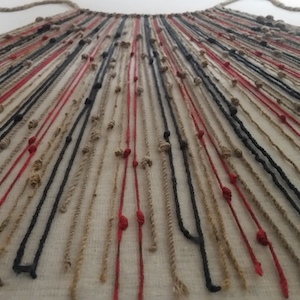Post-Classical (500 CE - 1450 CE)

Short Teaching Module: The Legacy of Charlemagne through the Ages
Teaching about the interplay of history and memory is fascinating. This is particularly true in an age when students are so highly attuned to source bias through news, life experience, online and social media interactions, and of course, learning about such issues in school.

Speculum Historiale by Vincent of Beauvais
Earlier accounts of Charlemagne’s life, rife with positive bias though many may be, pale in comparison to the heavily legendary account present in the thirteenth century’s memory of Charlemagne.

Deeds of Emperor Charles the Great
Later in the 9th century, Notker “the Stammerer” of St.-Gall wrote his Gesta Karoli Magni Imperatoris (Deeds of Emperor Charles the Great). He dedicated the work to Charlemagne’s great-grandson Charles the Fat (r.

Excerpts from the Vita Karoli Magni
Let us investigate the work of Charlemagne’s courtier Einhard, the Vita Karoli Magni, or Life of Charles the Great, which was composed during the reign of Louis the Pious, probably during the long decade from around 817-830.

Long Teaching Module: Inca Society
In South America in the centuries before 1500, the Peruvian coast and Andean highlands were home to a series of cultures that cultivated cotton as well as food crops. Of these, the largest empire was created by the Incas, who began as a small militaristic group and conquered surrounding groups.

Inca Khipu
Andean peoples, including the Incas, recorded information on khipus (also spelled quipu), collections of colored and knotted cords such as this one.

Iglesia Colonial de Conchagua
The Iglesia Colonial de Conchagua is one of the oldest churches in El Salvador. It stands in the shadows of the town’s namesake feature, the Conchagua volcano.

Indian textile fragment, 14th-15th century
This block-printed, cotton textile fragment, found in Old Cairo, Egypt, was made in Gujarat, India. It features a repeated stylized tendril pattern made by stamping red-brown dye on the cloth in vertical sections.

Fourteenth-Century Chinese Dragon
This Chinese animal figure belongs to the rich collections of the Museo Nacional de Arte Decorativo in Buenos Aires. Depicting a dragon, the piece dates back to the fourteenth century.
The Miracles of Sainte Foy
In 1013, Bernard of Angers visited the relics of Sainte Foy at the abbey of Conques, in southern France. Initially skeptical of the cult which had formed around this little girl martyr, Bernard nonetheless fell under her spell.